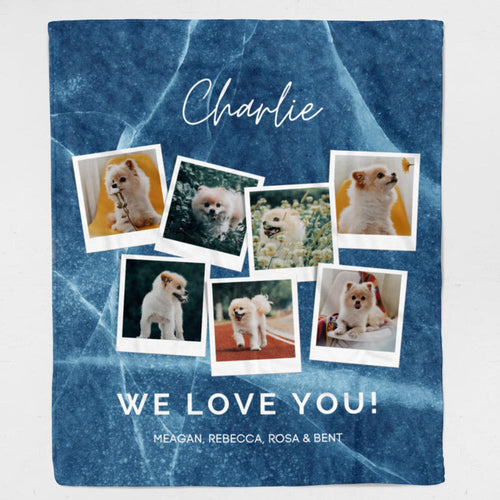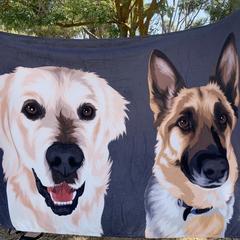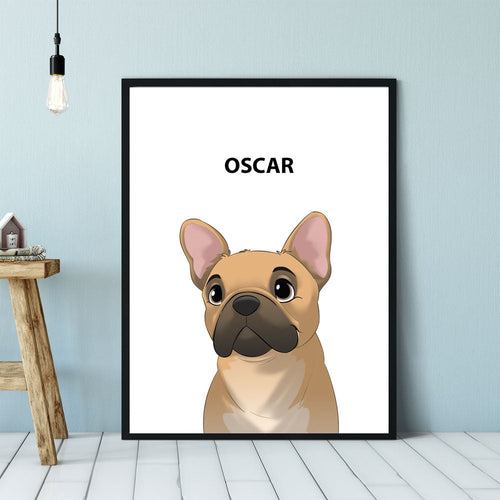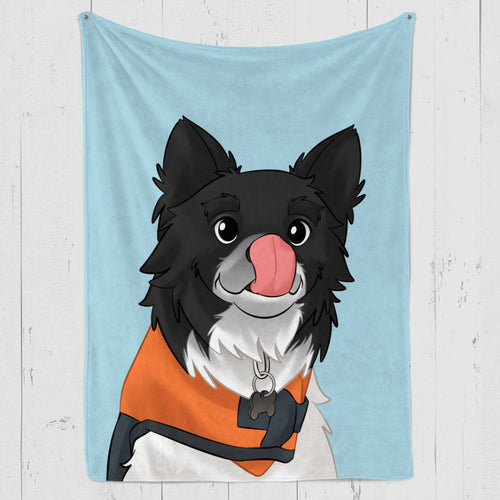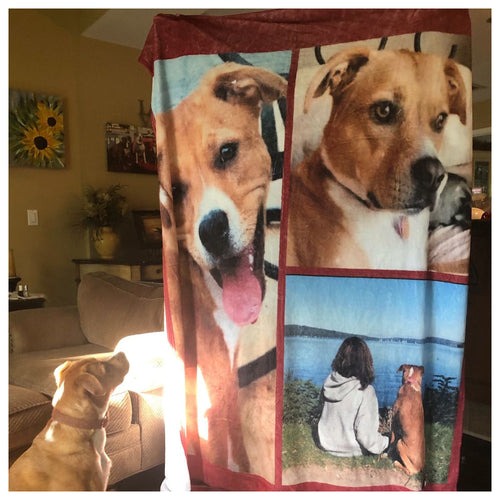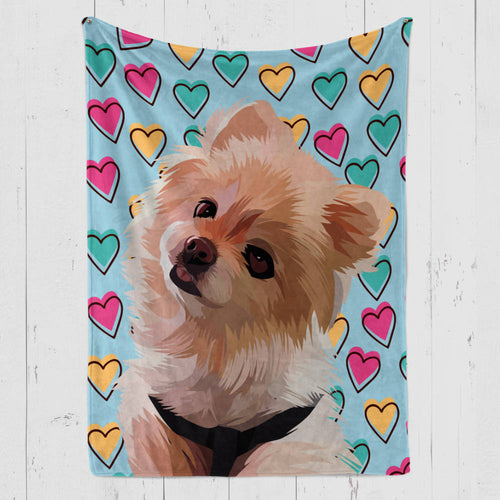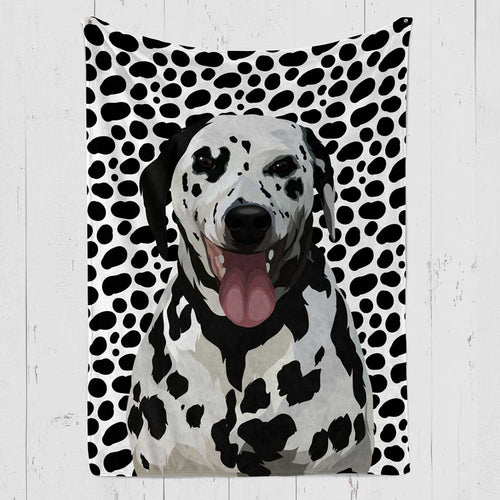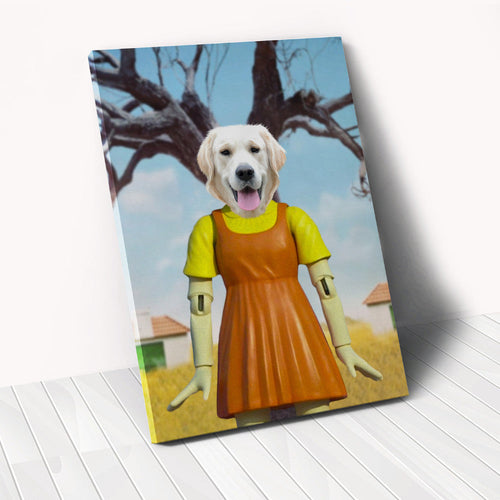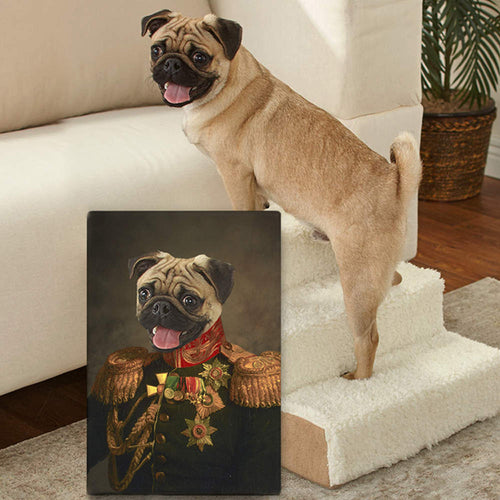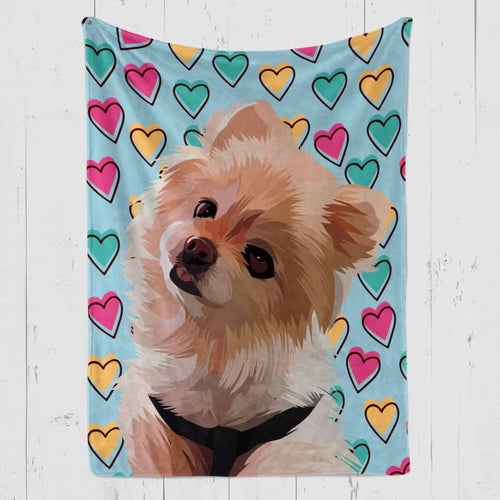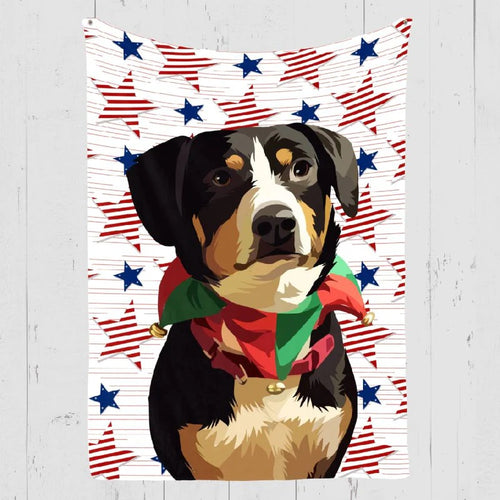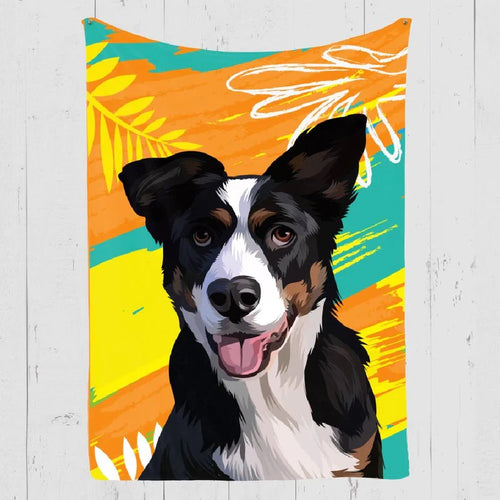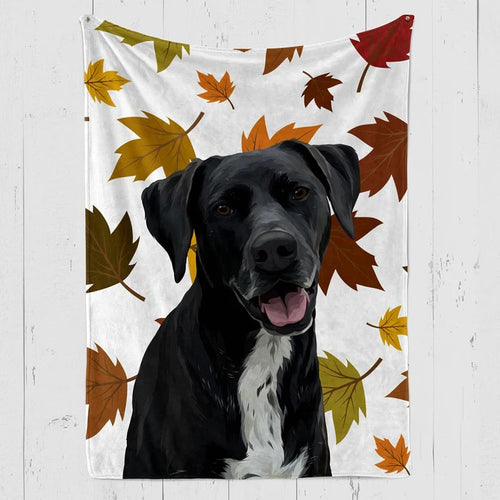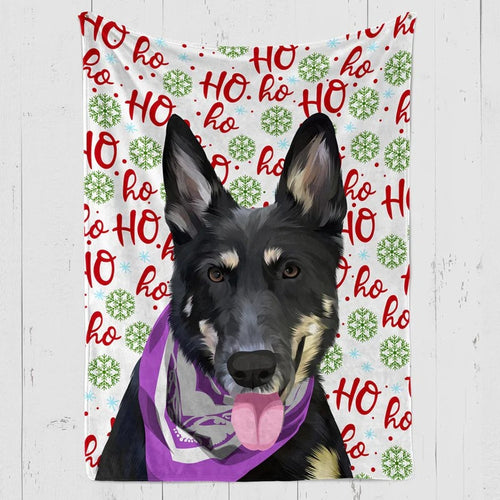
The Dog Training Journey
The phrase "man's best friend" has been well-earned by dogs because they are dependable companions who enjoy seeing their owners. Teaching commands alone is not the only aspect of dog training. Additionally, you ought to ensure their happiness and safety.
This large book can help you get started. It covers both advanced subjects like trick training and foundational subjects like positive reinforcement and obedience training. By the time the training is over, you and your dog will have a close relationship.
Part 1: Understanding Your Dog
Before you begin training, you should have a thorough understanding of your dog's personality, needs, and preferred methods of communication.
1.1. Breed-Specific Traits
Different dogs can be identified by their temperament and personality. Understanding these unique characteristics of each breed will help you better understand your dog’s behavior. Although Labrador Retrievers are very friendly and like to keep things going, Border Collies are considered to be shrewd and skilled herders. Knowing these traits will allow you to modify your training.
1.2. Age Matters
How well your dog learns and adapts depends largely on his age. Puppies can pick up new skills quickly, but their attention spans are short. Teen dogs can test the limits, but older dogs need more consistency and time to mature.
1.3. Body Language
Dogs can communicate with you simply by body language. Primarily, their bodies convey their thoughts and emotions. Understanding how your dog is feeling can be achieved by visualizing their body language. Small gestures like a wag of the tail, pricked ears, or head tilt can reveal a lot about your dog's mood and needs.
Part 2: Basic Obedience Training
To get a dog to behave well and listen, you need to teach it basic obedience commands. They teach important skills for staying safe and communicating.
2.1. The Sit Command
Most dog owners first teach their dogs to "sit." This is not only useful, but it also teaches respect and obedience. Do these things to teach your dog how to sit:
- Start in a place that is empty and quiet.
- Slowly move a treat up and backward while holding it just above their nose.
- Their bottom should naturally drop to the ground as their head follows the treat.
- Say "sit" and give them the treat as soon as they do.
2.2. The Stay Command
"Stay" is a command that could save your dog's life. It keeps them safe and under your control by teaching them to remain where they are until you release them. Try these methods to help teach your dog to stay:
- Get your dog to sit down first.
- Stretch your open palm in front of their face as a "stop" signal.
- Say "stay" with composure but firmness.
- Remain back, and reward them with praise and a treat if they remain still.
- Gradually increase the duration of your dog's stay and gradually remove them from the area.
2.3. The Come Command
Know how to say "come" to your dog in case you lose it in the park or backyard. Try the following to entice your dog to come:
- Start in a secure area and keep it closed.
- While on the ground, call your dog's name. Thereafter, say "Come".
- Give them lots of praise and a treat when they come to you.
- Proceed to gradually distance yourself from your dog as you consistently practice this command.
2.4. The Down Command
You can keep your dog calm and in control by using the "down" command when guests arrive or during family meals. Try these methods to teach your dog to lie down:
- Get your dog to sit down first.
- Hold a treat in front of their nose and allow it to drop to the floor.
- As they lay down after the treat, you say "down" and give them the treat.
2.5. The Heel Command
It's considerate to walk your dog on a leash and refrain from pulling all the time; this benefits both your dog and other people you encounter. Your dog can learn to walk calmly beside you by using the "heel" command. To instruct your dog in heeling:
- Take your dog on your left side.
- Verify that the leash is not tight in your right hand.
- Treat your dog when they get into the proper position, and then give them praise when they walk without tugging.
- Give your dog treats frequently as a consistent reward when it walks calmly beside you.
Part 3: Positive Reinforcement Training
Training your dog with positive reinforcement is a very effective and moral method. It functions by rewarding good behavior, which gives your dog a positive and enjoyable learning experience.
3.1. Clicker Training
Clicker training is a simple and efficient method of communicating with your dog when you are training them. Its foundation is classical conditioning. Instruction using a clicker:
- Let's "charge" the clicker first. To teach your dog that the sound indicates a treat, click and give it a treat several times right away.
- Mark the actions you want to happen with the clicker. For example, to teach them to "sit," click and reward them with a treat when their bottom touches the ground.
3.2. Treats and Rewards
Choosing appropriate treatment and compensation is important in positive reinforcement training. Expensive treats, such as cheese or small pieces of baked chicken, are usually more effective in training dogs to do certain things. Keep in mind that they need to be small to ensure you don’t overfeed your dog during training.
3.3. Praise and Affection
Along with treats, rewards and physical touch are splendid methods to reward behavior. Always don't forget to mention "yes" in a friendly and enthusiastic manner to expose what you're glad about.
Part 4: Behavior Modification
Dealing with behavioral problems is an important part of dog training. Here, we will discuss how to deal with common problems such as aggression, anxiety, and excessive dog barking.
4.1. Aggression
Dogs can become aggressive when they are scared, want to protect their territory, or have trouble making friends. It is important to understand the types of violence that are controlled and transformed, such as terror-based violence or territorial violence. To keep everyone safe, it is best to seek the help of a dog trainer or behaviorist if your dog acts aggressively.
4.2. Separation Anxiety
Is your canine stressed whilst you go away with them alone? If so, they may get upset. To assist your canine in getting used to being by itself:
- Spending much less and much less time with your canine is best.
- There are ways to relax that can assist them in feeling less stressed.
- Give them amusing toys and puzzles to play with even if you are away.
4.3. Excessive Barking
Some people also don’t like dogs that bark too much. To avoid this:
- Find out why the dog is barking and stop.
- If you say "Calm" to your dog, it will stop barking immediately.
- Don’t yell when your dog is bored. Give your pet more to do and think about.
4.4. Leash Reactivity
Many people have problems with leash reactivity, which is when dogs react to being leashed. To keep your dog from being a villain on a leash:
- Stop the pull by finding a head collar or leash that will fit better.
- If your dog is calm when you walk and other dogs or objects are moving around you, praise them.
- Slowly introduce the dog to new areas and situations, so that they are less afraid.
Part 5: Advanced Training
Once you learn the basics and move on to more complex training methods, you can see how intelligent and competent your dog is.
5.1. Advanced Obedience Commands
Giving your dog detailed obedience commands can make him safer and more responsive in real life than just the basics. Here are some slightly more complicated commands.
- Leave It: You can follow this command and stay alive. Your dog will either learn to ignore that person or immediately protest and go back to what he was doing. You can tell your dog to "Stop" something he shouldn't eat.
- Drop It: Like "Stop", "drop" tells your dog to drop something you're holding. Your dog isn’t exposed to things they shouldn’t have or things that could choke him if he does this.
- Wait: Telling your dog to "Wait" prevents him from moving around. This is useful in many situations such as gates and before crossing streets.
5.2. Trick Training
By teaching your dog cool tricks, you can sharpen their imagination. Having fun together also strengthens your relationship.
You can teach your dog these fun things.
- Roll Over: This is a clever and pretty universally popular trick you can teach your dog.
- Play Dead: This is a trick to get your dog to "Play Dead" so to speak.
- Shake Hands: A nice greeting that shows how well-behaved your dog is.
5.3. Canine Sports and Activities
That’s good for your pet’s health and happiness. Taking your dog to sporting events and other events can keep him mentally and physically busy. You may want to check out these resources:
- Agility: You lead your dog through set obstacles in this fun game. This allows your pet to work more efficiently and faster.
- Nose Work: In this game, your dog will use his keen sense of smell to search for hidden scents.
- Obedience Tests: You can test the obedience of your dog to see how well he can do what you say.
Part 6: Consistency and Patience
The foundation of effective dog training is consistency and patience. It is essential to carry these traits with you as you train.
6.1. Training Schedule
Both you and your dog will benefit from having a regular training routine. Consistency aids in reinforcing desired behaviors and reducing ambiguity.
- Frequency: In most cases, frequent, brief training sessions are preferable to infrequent, extended ones. You should aim for daily sessions of 10–15 minutes in length.
- Routine: To establish a regular pattern, training should be done at consistent times each day, such as before eating or taking a walk.
6.2. Reinforcement Timing
It is important to reward your dog for doing well at the right time. Proper timing of rewards or discipline helps your dog establish a bond between the two.
- Early Reward: As soon as your dog does something curious, reward him with praise and treats. This early reinforcement further strengthens the link between the behavior and its later reinforcement.
- Consistent Discipline: The necessary discipline should follow your dog’s unwanted behaviors to help him bond with the two.
6.3. Staying Calm
Be calm and patient while training your dog so that it is fun for both of you. When people are sad or angry, their pets can tell. Staying calm can help reduce stress and build confidence.
Conclusion
Pay attention to what your dog wants and needs, and give it treats when it says so. Wait and stay steady. This will help you and your dog get along great. Because you love and trust your dog, don't forget how important it is to train it. Take pleasure in your wins as they come.
Frequently Asked Questions:
Why should I train my dog?
How can I help my dog and puppy get along with other people?
What can I do to teach my dog not to get too attached to other dogs?
What can I do to keep my dog from running away?
How do I get my dog to stop jumping on people?
Similar Articles
Latest Review on Woof Blankets
To have such a masterpiece by my side every day is a gift for me and my memories with Rex. Thank you WoofBlankets for such an opportunity to recreate his image on a blanket.Lara o’ Miguel US, California
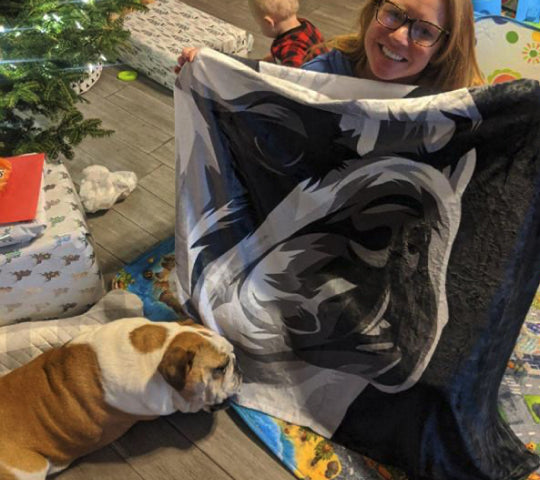
COLLECTION WORTH EVERY PENNY
BEST SELLERS
-
The Witch - Custom Pet Portrait
![]()
- -33%
CanvasSHOP NOW- Regular price
- from $59.95
- Sale price
- from $59.95
- Regular price
-
$89.95 - Unit price
- per
Sold out -
Halloween Custom Pet Blanket
![Halloween Custom Cat Blanket]()
- NEW
- -39%
BlanketsSHOP NOW- Regular price
- from $69.95
- Sale price
- from $69.95
- Regular price
-
$114.95 - Unit price
- per
Sold out -
The Dracula - Custom Pet Portrait
![]()
- -25%
CanvasSHOP NOW- Regular price
- from $59.95
- Sale price
- from $59.95
- Regular price
-
$79.95 - Unit price
- per
Sold out -
Woofy Single Color Custom Pet Blanket
![Woofy Single Custom Pet Blanket – Woof Blanket]()
- -41%
BlanketsSHOP NOW- Regular price
- from $64.95
- Sale price
- from $64.95
- Regular price
-
$109.95 - Unit price
- per
Sold out -
Summer Time Custom Pet Blanket
![Summer Time Custom Pet Blanket]()
- -39%
BlanketsSHOP NOW- Regular price
- from $69.95
- Sale price
- from $69.95
- Regular price
-
$114.95 - Unit price
- per
Sold out -
The Admiral - Custom Pet Portrait
![The Admiral - Custom Pet Portrait Online]()
- NEW
- -25%
CanvasSHOP NOW- Regular price
- from $59.95
- Sale price
- from $59.95
- Regular price
-
$79.95 - Unit price
- per
Sold out -
Wings of Loyalty - Custom Pet Portrait
![]()
- NEW
CanvasSHOP NOW- Regular price
- from $59.95
- Sale price
- from $59.95
- Regular price
-
- Unit price
- per
Sold out -
Celestial Paws - Custom Pet Portrait
![]() CanvasSHOP NOW
CanvasSHOP NOW- Regular price
- from $59.95
- Sale price
- from $59.95
- Regular price
-
- Unit price
- per
Sold out -
Woof Splash Custom Pet Blanket
![Woof Splash Custom Pet Blanket]()
- -39%
BlanketsSHOP NOW- Regular price
- from $69.95
- Sale price
- from $69.95
- Regular price
-
$114.95 - Unit price
- per
Sold out -
The Loyal Soul - Custom Pet Portrait
![]()
- NEW
SHOP NOW- Regular price
- from $59.95
- Sale price
- from $59.95
- Regular price
-
- Unit price
- per
Sold out -
Modern Pet Portraits
![Cute Dog Modern Pet Portraits Online]()
- NEW
- -36%
CanvasSHOP NOW- Regular price
- from $59.95
- Sale price
- from $59.95
- Regular price
-
$93.95 - Unit price
- per
Sold out -
Cartoonized Pet Portraits (New)
![Cartoonized Pet Custom Portraits Online]()
- -36%
SHOP NOW- Regular price
- from $59.95
- Sale price
- from $59.95
- Regular price
-
$93.95 - Unit price
- per
Sold out -
Pet Memorial Custom Photo Collage Blanket
![Personalized pet memorial quilt with photos]()
- -41%
BlanketsSHOP NOW- Regular price
- from $64.95
- Sale price
- from $64.95
- Regular price
-
$109.95 - Unit price
- per
Sold out -
The French Sailor - Custom Pet Portrait
![]()
- -25%
CanvasSHOP NOW- Regular price
- from $59.95
- Sale price
- from $59.95
- Regular price
-
$79.95 - Unit price
- per
Sold out -
The Policeman - Custom Pet Portrait
![]()
- NEW
- -25%
CanvasSHOP NOW- Regular price
- from $59.95
- Sale price
- from $59.95
- Regular price
-
$79.95 - Unit price
- per
Sold out -
The General - Custom Pet Portrait
![]()
- NEW
- -25%
CanvasSHOP NOW- Regular price
- from $59.95
- Sale price
- from $59.95
- Regular price
-
$79.95 - Unit price
- per
Sold out -
Woof Love Custom Pet Blanket
![Woof Love Custom Pet Blanket]()
- -39%
BlanketsSHOP NOW- Regular price
- from $69.95
- Sale price
- from $69.95
- Regular price
-
$114.95 - Unit price
- per
Sold out -
The Ambassador - Custom Pet Portrait
![The Ambassador - Custom Pet Portrait Online]()
- NEW
- -25%
CanvasSHOP NOW- Regular price
- from $59.95
- Sale price
- from $59.95
- Regular price
-
$79.95 - Unit price
- per
Sold out -
Fall In Love Custom Pet Blanket
![Fall In Love Custom Dog Blanket]()
- NEW
- -39%
BlanketsSHOP NOW- Regular price
- from $69.95
- Sale price
- from $69.95
- Regular price
-
$114.95 - Unit price
- per
Sold out -
The Classy Lady - Custom Pet Portrait
![The Classy Lady]()
- NEW
- -25%
CanvasSHOP NOW- Regular price
- from $59.95
- Sale price
- from $59.95
- Regular price
-
$79.95 - Unit price
- per
Sold out -
The Duke - Custom Pet Portrait
![The Duke - Custom Pet Portrait]()
- NEW
- -25%
CanvasSHOP NOW- Regular price
- from $59.95
- Sale price
- from $59.95
- Regular price
-
$79.95 - Unit price
- per
Sold out -
Dog In Suit- Custom Pet Portrait
![Dash Dog In Suit- Custom Pet Portrait Online]()
- NEW
- -25%
CanvasSHOP NOW- Regular price
- from $59.95
- Sale price
- from $59.95
- Regular price
-
$79.95 - Unit price
- per
Sold out -
The Princess - Custom Pet Portrait
![]()
- NEW
- -25%
CanvasSHOP NOW- Regular price
- from $59.95
- Sale price
- from $59.95
- Regular price
-
$79.95 - Unit price
- per
Sold out -
Modern Pet Portrait with One Mug
![Modern Pet Portrait with One Mug]()
- -25%
Print MaterialSHOP NOW- Regular price
- from $99.95
- Sale price
- from $99.95
- Regular price
-
$133.95 - Unit price
- per
Sold out -
The Aristocrat - Custom Pet Portrait
![The Aristocrat - Custom Pet Portrait At Best Price]()
- NEW
- -25%
CanvasSHOP NOW- Regular price
- from $59.95
- Sale price
- from $59.95
- Regular price
-
$79.95 - Unit price
- per
Sold out -
Single Color Custom Blanket with 1 Mug
![Single Color Custom Blanket with 1 Mug]() BlanketsSHOP NOW
BlanketsSHOP NOW- Regular price
- from $99.95
- Sale price
- from $99.95
- Regular price
-
- Unit price
- per
Sold out -
Single Color Custom Blanket with 2 Pillows
![Single Color Custom Pet Blanket with 2 Pillows]()
- -21%
BlanketsSHOP NOW- Regular price
- from $99.95
- Sale price
- from $99.95
- Regular price
-
$125.95 - Unit price
- per
Sold out -
The Dog in Suit Custom Pet Mug
![]()
- -20%
MugsSHOP NOW- Regular price
- $39.95
- Sale price
- $39.95
- Regular price
-
$49.95 - Unit price
- per
Sold out -
Angel Custom Pet Mug
![]()
- -20%
MugsSHOP NOW- Regular price
- $39.95
- Sale price
- $39.95
- Regular price
-
$49.95 - Unit price
- per
Sold out -
This Human Belongs To - Custom Pet Mug
![]()
- NEW
- -20%
MugsSHOP NOW- Regular price
- $39.95
- Sale price
- $39.95
- Regular price
-
$49.95 - Unit price
- per
Sold out -
It's Not Dog Hair Custom Pet Mug
![]()
- NEW
- -20%
MugsSHOP NOW- Regular price
- $39.95
- Sale price
- $39.95
- Regular price
-
$49.95 - Unit price
- per
Sold out -
My Dog Is My Valentine Custom Pet Mug
![]()
- NEW
- -20%
MugsSHOP NOW- Regular price
- $39.95
- Sale price
- $39.95
- Regular price
-
$49.95 - Unit price
- per
Sold out -
3 Photos With Message Custom Pet Mug
![]()
- NEW
- -20%
MugsSHOP NOW- Regular price
- $39.95
- Sale price
- $39.95
- Regular price
-
$49.95 - Unit price
- per
Sold out -
My Valentine Has Four Legs- Personalized Mugs
![]()
- NEW
- -20%
MugsSHOP NOW- Regular price
- $39.95
- Sale price
- $39.95
- Regular price
-
$49.95 - Unit price
- per
Sold out -
Dog Mamma Custom Pet Coffee Mug
![]()
- -20%
MugsSHOP NOW- Regular price
- $39.95
- Sale price
- $39.95
- Regular price
-
$49.95 - Unit price
- per
Sold out -
Uncle Sam - Custom Pet Portrait
![]()
- NEW
- -25%
CanvasSHOP NOW- Regular price
- from $59.95
- Sale price
- from $59.95
- Regular price
-
$79.95 - Unit price
- per
Sold out -
The Revolutionary Emperor - Custom Pet Portrait
![]()
- NEW
- -25%
CanvasSHOP NOW- Regular price
- from $59.95
- Sale price
- from $59.95
- Regular price
-
$79.95 - Unit price
- per
Sold out -
The Princess Paws - Custom Pet Portrait
![]()
- -25%
CanvasSHOP NOW- Regular price
- from $59.95
- Sale price
- from $59.95
- Regular price
-
$79.95 - Unit price
- per
Sold out -
Exclusive Custom Pet Blanket
![Exclusive Custom Pet Blanket]()
- -39%
BlanketsSHOP NOW- Regular price
- from $69.95
- Sale price
- from $69.95
- Regular price
-
$114.95 - Unit price
- per
Sold out -
The Dark Crusader Knight - Custom Pet Portrait
![]()
- -25%
CanvasSHOP NOW- Regular price
- from $59.95
- Sale price
- from $59.95
- Regular price
-
$79.95 - Unit price
- per
Sold out
